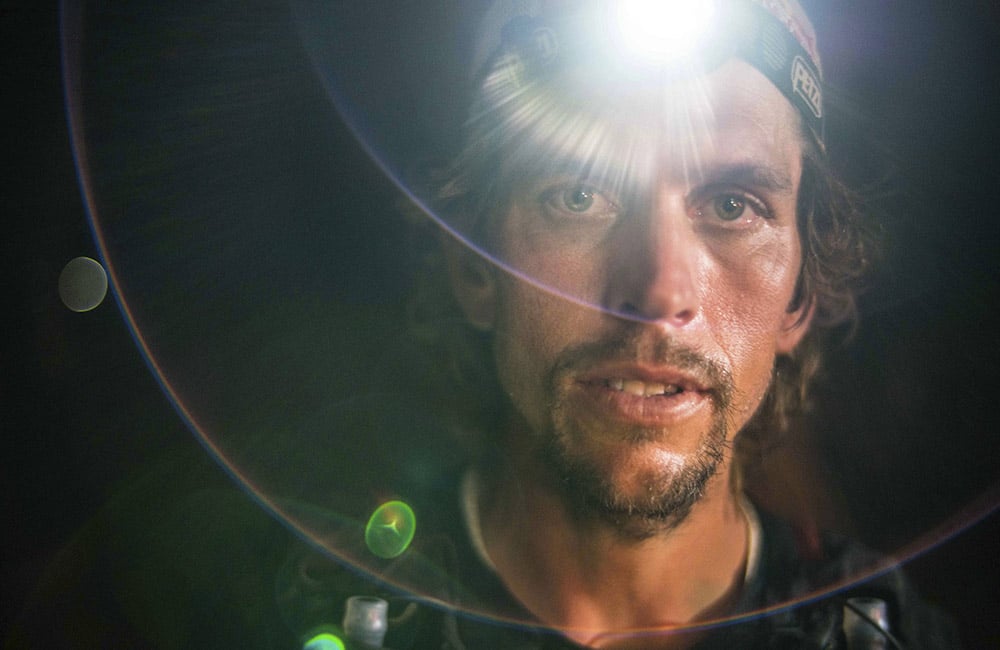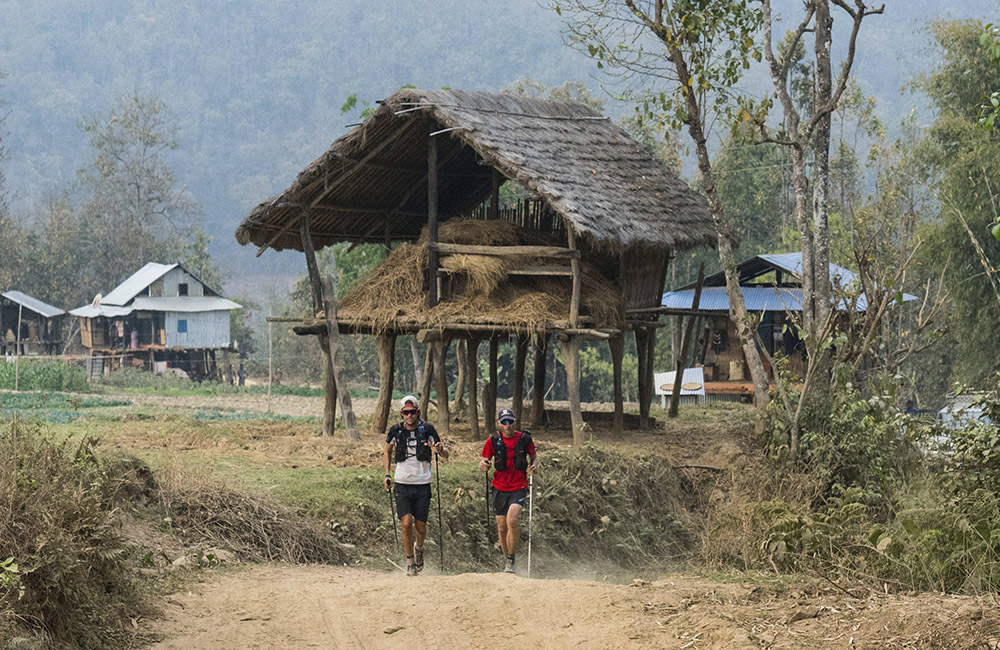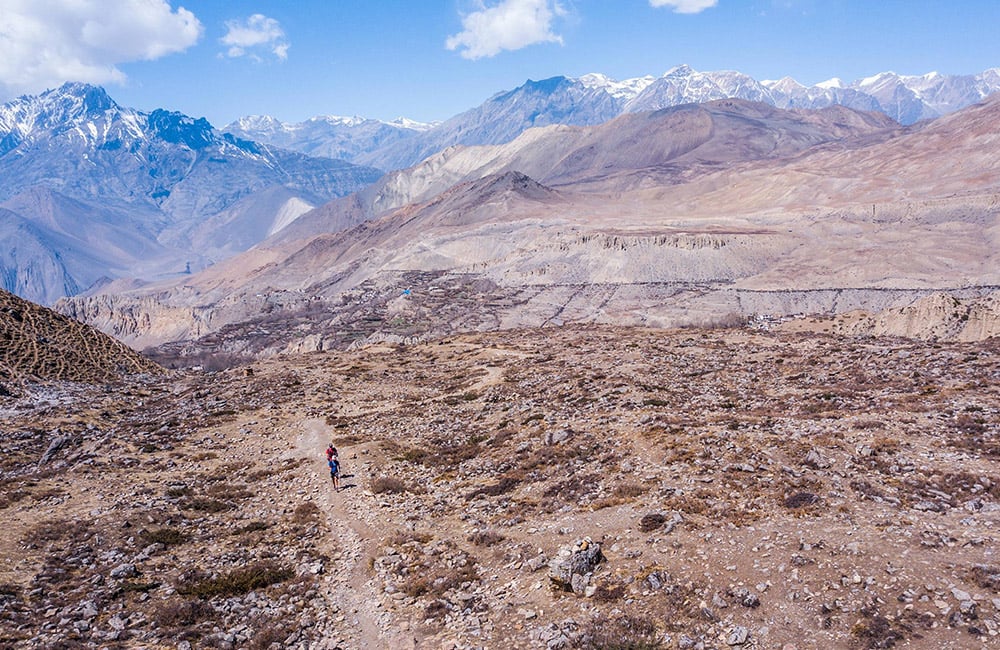
© Dean Leslie / Red Bull Content Pool
The Ultra Trail Mont Blanc (UTMB), considered the world’s premiere ultra race, has haunted 36-year-old South African athlete Ryan Sandes since 2015.
The last three times he attempted it, “trail karma” got the better of him: first glandular fever knocked him out, the second time he dropped out after 40 km due to a stomach infection, and in 2017 he finished in the top 20, but only after soldiering through the race with dead legs.
Now he’s in Europe training in the Alps to give it another shot in late August, and this time something has changed – his attitude. For the build up to UTMB, Sandes ran the Stubai Ultra – 63 km, 5075 m ascent. Unfortunately, he had pull out of the race early. “That didn’t go according to plan,” he said on Instagram. “It seems my climbing legs are still in the Himalayas. I was pretty disappointed to cut my race short.”

© Dean Leslie / Red Bull Content Pool
In spite of this, and his previous bad luck on the UTMB, Sandes is feeling unusually relaxed. He puts it down to some of the hard lessons he learned while smashing the Fastest Known Time (FKT) on the Great Himalayan Trail with Ryno Griesel in March this year.
“In the past I put too much pressure on myself at the UTMB with time and results,” Sandes says. “Now I just want to enjoy the process.
“I want to do the best I can, but there’s only so much you can do. You can’t get too freaked out. I don’t want to look back 10 years from now, and say, ‘yeah, I ran UTMB, but I hated most of it because I was too fixated on the result.
“I want to enjoy the overall experience. The end goal is just a byproduct.”
Here are Sandes’s life five lessons from the Great Himalayan Trail:

© Dean Leslie / Red Bull Content Pool
1. Break things down into bite size chunks
“For ultras, it might be from one aid station to the next,” Sandes says. “For normal life projects, like building a house, find a similar way to try to wrap your head around it. Sometimes I think too far ahead, and then I get stressed. On the Great Himalayan Trail I was forced to take it day by day – it was too big to do otherwise. It was cool learning to be really present and in the moment.”
2. Be generous
“The Nepalese people are incredible, how welcoming and supportive they are. It taught me one small thing you do can make a big difference in a person’s life. It’s all about being thoughtful. Nepalese in the mountains live a basic life, but they are super family orientated and friendly. It was quite a big reminder for me, especially now I have baby boy. In the west, everything is so quick and busy, that we sometimes forget to prioritise family. It reminds me to keep things simple.”
3. Focus on the small things in life
“In modern society we have massive goals, it’s shoot for the moon, which is important, but it’s also about being content with the smaller things in life. I get so hell bent on a race, I neglect family and the small things in life. We can become so driven sometimes that life can feel empty. It’s about balance, and appreciating small pleasures.”
4. Don’t overthink it
“I learned I’m a little bit of a control freak. It taught me there are so many things I can’t control. With life in general, it’s the person who can think on his feet who does the best. You need to be responsive to what life throws at you. In the Himalayas, we had quite a detailed plan in place, but everyday everything went out the window. It was pretty cool. Don’t overthink and freak out – you won’t enjoy yourself.”
5. Focus on the positive
“In the Himalayas, I had a two day period when I was really missing home. Interestingly, that was the toughest time for me physically. The physical follows the mental. To counteract this I told myself that it was a one off opportunity, it was my decision to be there, and lots of people dreamed of doing what I was doing. I also focused on the scenery and interacting with the locals. That definitely improved things.”
Lead image credit: © Dean Leslie / Red Bull Content Pool